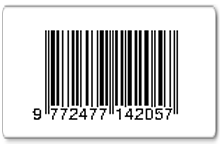Investigation of Anthropomorphic Discourses in Biology Textbooks
Abstract
Although anthropomorphic language is known to be widely used in popular science textbooks and in classroom settings by both teachers and students to describe scientific concepts, little is known about how often and for which biology concepts it is used in high school biology textbooks. Since the issue of using anthropomorphic discourses in the language of science is controversial, it is important to analyze such discourses in biology textbooks. This study aimed to analyse the anthropomorphic discourses used in high school biology textbooks. In this study, anthropomorphic discourses used in high school biology textbooks were examined using the document analysis method. The process of analyzing sentences containing anthropomorphism was carried out in five stages: the naming stage; the elimination and separation stage; the compilation and category development stage; the validity and reliability stage; and the stage of digitizing the qualitative data. It was determined that a total of 1074 anthropomorphic discourses were used in relation to 177 biological concepts in the 4 biology textbooks examined. The anthropomorphic discourses in the books were classified into 19 categories. The findings showed that anthropomorphic discourses are used very frequently in high school biology textbooks and most of them are embedded in the language and consist of stereotyped terms and idioms.
Keywords
Full Text:
PDFReferences
Barman, CR., Stein, M, McNair, S & Barman, NS 2006, ‘Students’ ideas about plants & plant growth’, The American Biology Teacher, vol. 68, no. 2, pp. 73-79.
Barnhart, RK 2000, Chambers dictionary of etymology, Chambers Harrap.
Betz, N, Leffers, JS, Thor, EED, Fux, M, de Nesnera, K, Tanner, KD & Coley, JD 2019, ‘Cognitive construal-consistent instructor language in the undergraduate biology classroom’, CBE-Life Sciences Education, vol. 18, no. 4, pp. 1-15.
Byrne, J, Grace, M & Hanley, P 2009, ‘Children’s anthropomorphic and anthropocentric ideas about micro-organisms’, Journal of Biological Education, vol. 44, no. 1, pp. 37-43.
Coley, JD & Tanner, KD 2012, ‘Common origins of diverse misconceptions: Cognitive principles and the development of biology thinking’, CBE-Life Sciences Education, vol. 11, pp. 209-215.
Cruse, DA 1986, Lexical semantics, Cambridge University Press.
Dikmenli, M & Çardak, O 2004, ‘A study on misconceptions in the 9th grade high school biology textbooks’, Eurasian Journal of Educational Research, vol. 17, pp. 130-141.
Duit, R 1991, ‘On the role of analogies and metaphors in learning science’, Science Education, vol. 75, no. 6, pp. 649-672.
Glaser, B & Strauss, A 1967, The discovery of grounded theory: Strategies for qualitative research, Sociology Press.
Gregory, TR 2009, ‘Understanding natural selection: Essential concepts and common misconceptions’, Evolution: Education and Outreach, vol. 2, pp. 156-175.
Hellden, G 2005, ‘Exploring understandings and responses to science: A program of longitudinal studies’, Research in Science Education, vol. 35, no. 1, pp. 99-122.
Kallery, M & Psillos, D 2004, ‘Anthropomorphisms and animism in early year science; why teachers use them, how they conceptualise them and what are their views on their use’, Research in Science Education, vol. 34, no. 3, pp. 291-311.
Kampourakis, K 2014, Understanding evolution, Cambridge University Press.
Kattmann, U 2008, ‘Learning biology by means of anthropomorphic conceptions?’ M. Hammann, M, Reiss, C, Boulter and SD Tunnicliffe (Eds.), Biology in context: Learning and teaching for the twenty-first century, Institute of Education.
Lakoff, G & Johnson, M 1980, Methaphors we live by, University of Chicago Press.
Legare, CH, Lane, JD & Evans, EM 2013, ‘Anthropomorphizing science: How does it affect the development of evolutionary concepts?’, Merrill-Palmer Quarterly, vol. 59, no. 2, pp. 168-197.
Lemke, JL 1990, Thinking science: Language learning and values, Ablex.
Miles, MB & Huberman, AM 2016, An extended sourcebook: Qualitative data analysis, Pegem Academy.
Moore, R, Mitchell, G, Bally, R, Inglis, M, Day, J & Jacobs, D 2002, ‘Undergraduates’ understanding of evolution: Ascriptions of agency as a problem for student learning’, Journal of Biological Education, vol. 36, no. 2, pp. 65-71.
Nehm, RH & Ridgway, J 2011, ‘What do experts and novices “see” in evolutionary problems?’, Evolution: Education and Outreach, vol. 4, pp. 666-679.
O’Leary, Z 2004, The essential guide to doing research, SAGE Publications Ltd.
Saban, A, Koçbeker, BN & Saban, A 2006, ‘An investigation of the concept of teacher among prospective teachers through metaphor analysis’, Educational Sciences: Theory & Practice, vol. 6, no. 2, pp. 509-522.
Shepardson, DP 2005, ‘Student ideas: What is an environment?’, Journal of Environmental Education, vol. 36, no. 4, 49-58.
Shtulman, A 2006, ‘Qualitative differences between naive and scientific theories of evolution’, Cognitive Psychology, vol. 52, no. 2, pp. 170-194.
Shtulman, A & Schulz, L 2008, ‘The relation between essentialist beliefs and evolutionary reasoning’, Cognitive Science, vol. 32, no. 6, pp. 1049-1062.
Sinatra, GM, Brem, SK & Evans, EM 2008, ‘Changing minds? Implications of conceptual change for teaching and learning about biological evolution’, Evolution: Education and Outreach, vol. 1, pp. 189-195.
Sprinkle, RH 2006, ‘Unremembered intimacies. Review of “Beasts of the earth: Animals humans, and disease” by E. F. Torrey & R. H. Yolken’, BioScience, vol. 56, pp. 166-167.
Taber, KS 1995, ‘An analogy for discussing progression in learning chemistry’, School Science Review, vol. 76, no. 276, pp. 91-95.
Taber, KS 2008, ‘Conceptual resources for learning science: Issues of transience and grain size in cognition and cognitive structure’, International Journal of Science Education, vol. 30, pp. 1027-1053.
Taber, KS & Watts, M 1996, ‘The secret life of the chemical bond: Students’ anthropomorphic and animistic references to bonding’, International Journal of Science Education, vol. 18, no. 5, pp. 557-568.
Taber, KS, De Trafford, T & Quai, T 2006, ‘Conceptual resources for constructing the concepts of electricity: The role of models, analogies and imagination’, Physics Education, vol. 41, no. 2, pp. 155-160.
Tamir, P & Zohar, A 1991, ‘Anthropomorphism and teleology in reasoning about biological phenomena’, Science Education, vol. 16, no. 1, pp. 83-97.
Treagust, DF & Harrison, AG 2000, ‘In search of explanatory frameworks: An analysis of Richard Feynman’s lecture ‘Atoms in motion.’’, International Journal of Science Education, vol. 22, no. 11, pp. 1157-1170.
Tshuma, T & Sanders, M 2015, ‘Textbooks as a possible influence on unscientific ideas about evolution’, Journal of Biological Education, vol. 49, no. 4, pp. 354-369.
Wood, M 2019, ‘The potential for anthropomorphism in communicating science: Inspiration from Japan’, Cultures of Science, vol. 2, no. 1, pp. 23-34.
Yıldırım, A & Şimşek, H 2016, Sosyal bilimlerde nitel araştırma yöntemleri [Qualitative research methods in the social sciences], Seçkin.
Zohar, A & Ginossar, S 1998, ‘Lifting the taboo regarding teleology and anthropomorphism in biology education-heretical suggestions’, Science Education, vol. 82, no. 6, 679-697.
DOI: http://dx.doi.org/10.30870/jppi.v9i2.21622
Refbacks
- There are currently no refbacks.
Copyright (c) 2023 Jurnal Penelitian dan Pembelajaran IPA

This work is licensed under a Creative Commons Attribution 4.0 International License.
Jurnal Penelitian dan Pembelajaran IPA is licensed under a Creative Commons Attribution 4.0 International License
Copyright © 2025 Jurnal Penelitian dan Pembelajaran IPA. All rights reserved.






